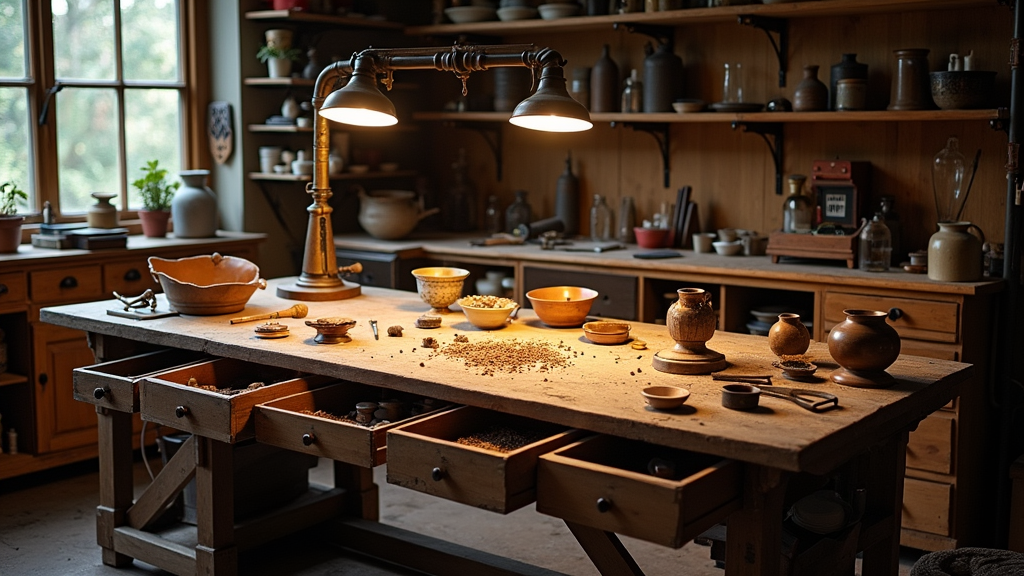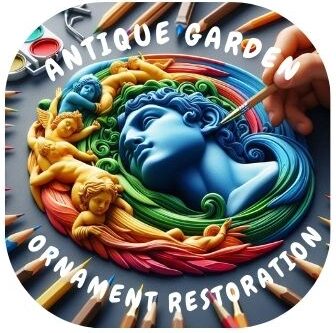Restoration work is a special mix of patience, skill, and deep respect for the past. Whether it’s a centuries-old painting, a fragile manuscript, or rotten floorboards in a Victorian home, bringing something back to life feels like a kind of magic. I’ve always been amazed by the people who do this work, so I had to sit down and hear their stories. This article brings together firsthand interviews and some handy insights on what goes into true restoration mastery.

What Drives Restoration Experts?
If you ask anyone in the restoration field why they do what they do, you’ll hear a lot about passion and respect. These experts aren’t just fixing things for a paycheck. There’s usually a deep connection to history as well as a thrill in the details. One expert I spoke to, Maria, has spent thirty years mending antique tapestries. She told me, “Saving a piece with family stories stitched into the fibers brings me a satisfaction you can’t get from anything mass produced. Each repair is a small victory over time.”
Not everyone gets into this field the same way. Some, like Simon, started as fine art students before getting hooked on cleaning away centuries of grime from oil paintings. Others, like engineer turned cabinetmaker Priya, found their way through working with their hands and stumbling upon a love for lost techniques. No matter how they started, most restoration experts agree it’s pretty addictive work.
The Basics of Restoration: What Goes Into the Craft?
Restoration covers a huge range of specialties: art, documents, woodwork, metal, even whole buildings. Every object needs its own approach. But there are a few things almost every restorer keeps in their toolkit:
- Careful Research: Understanding the materials and historical context is step one. Restorers spend hours digging into old records, photos, and sometimes even talking with people who remember the original piece.
- Gentle Cleaning: Removing dirt, dust, or mold without hurting the item underneath. This can mean using anything from cotton swabs and distilled water to special solvents and UV light.
- Skillful Repair: Patching tears, replacing missing parts, or stabilizing flaking paint, all while making sure new work blends in naturally.
- Full Documentation: Taking photos, notes, and sometimes creating reports on every step. This keeps the history clear for the next generation.
Each piece brings its own set of challenges. One restorer I met, Jasmine, specializes in old books. She jokes, “A single book might surprise you with animal glue, handmade cotton paper, and a leather cover, all reacting totally differently to the same tool.” This puzzle solving keeps things interesting.
Restoration work also requires a willingness to keep learning. Methods that worked fifty years ago may now be considered unsafe or outdated. Today’s experts often mix together old-school tricks with new science, blending intuition with ongoing study.
Expert Interviews: Firsthand Stories from the Workshop
Sitting down with restoration experts feels a bit like opening a door to another era. Here are some stories that stuck with me:
Maria – Textile Restorer
Maria pulled out an 18th century sampler for me to see. “This belonged to a girl who sewed it at the age of twelve in 1763. It came to me stained and full of moth holes. I spent weeks researching the proper thread and reconstructing missing stitches by hand. When I handed it back, the owner said it felt like she’d recovered a piece of her family’s soul.”
Simon – Painting Conservator
Simon described working for a small museum in Wales, cleaning a portrait covered in nicotine stains. “The moment yellowed varnish comes off and true colors come out is always exciting. You uncover details even curators haven’t seen in decades.” He also mentioned the value of testing every material. “You can’t just grab a bottle and hope for the best. A simple mistake can turn a masterpiece into a mess.”
Priya – Furniture Restorer
Priya talked about bringing back the shine to a battered Art Deco desk. “Sometimes I just sit and look at the wood grain before touching it. The finish has to match the rest, so you need patience. I end up doing a lot of handwork that’s almost meditative.” Her favorite thing? “That moment the client recognizes a family heirloom again.”
Challenges That Restoration Experts Face
Restoration has a lot of personal rewards, but it isn’t always glamorous. Here are a few hurdles restorers run into:
- Hidden Damage: Old objects can hide all sorts of problems: mold, unstable glues, insect damage, or layers of previous “repairs” that weren’t done so well.
- Finding Materials: Tracking down period appropriate supplies isn’t easy. For some jobs, restorers even create custom blends of glue or pigments using original recipes found in dusty books.
- Balancing Old and New: You’ve got to walk a careful line between preserving character and making an object usable again. Using too many modern materials can erase the authenticity, but leaving issues untreated can lead to further decay.
- Time Pressure: Clients might want quick turnarounds, but true restoration just can’t be rushed. One mistake can mean starting over, or worse, further damage.
Hidden Surprises
One night, Jasmine found herself peeling away the cover of a century old diary only to stumble upon a hidden envelope tucked inside. “I messaged the client immediately and sent photos. We worked out a plan for preserving both the diary and the secret letter.” Finds like these make the whole process that much more exciting.
Modern Challenges
With the growing popularity of upcycling and quick DIY fixes, some restoration experts worry about people attempting risky repairs or using unsuitable glues that cause long term harm. That’s why most professionals encourage folks to check in with questions before trying anything hazardous on a valuable piece.
Technology is also making an impact. Restoration professionals now use digital imaging to track progress, or to create 3D scans for planning fixes. These new tools let them spot issues invisible to the naked eye and make more careful decisions about what steps to take. However, not all restorers trust new tech completely. Maria notes, “Advanced imaging helps, but nothing beats handling the fabric and really getting a feel for its history.” The balance between human touch and technology remains a hot topic in the field.
Tools, Techniques, and Materials Restoration Experts Swear By
Everyone seems to have favorite tools that never leave their side. Here are a few staples I’ve spotted in almost every workshop:
- Cotton Gloves & Brushes: Prevent fingerprints and dust on sensitive surfaces.
- Specialized Adhesives: Things like hide glue (used in antique furniture) or reversible adhesives designed for conservation.
- Scalpels, Tweezers, and Micro Spatulas: All for precision work, reaching under layers, and making tiny repairs.
- UV Lamps and Microscopes: These help track down hidden damage or tiny signatures, sometimes missed by the naked eye.
Techniques also vary. For instance, retouching paint on an old canvas means matching the aging process so new touches “disappear” into the original. In book restoration, humidification chambers soften brittle paper for safe repairs. Knowledge of chemistry, craft, and even a little intuition all get mixed together here.
Another emerging tool is 3D printing, which some experts use to recreate missing decorative elements in furniture or frames. While it still takes a careful touch to finish and blend these pieces in, the process is allowing for repairs that would have been nearly impossible decades ago.
Advice for Beginners Interested in Restoration Work
Curious about getting into this field? The experts I chatted with had some advice worth noting:
- Start Small: Practice on things with low value before moving up to valuable antiques.
- Learn the Basics: Plenty of museums and organizations offer beginner level courses in conservation, history, and specialized techniques.
- Ask for Guidance: Most restorers are happy to share tips—show a genuine interest and most will point you toward good resources.
- Document Everything: Even your practice projects should be photographed before, during, and after. This habit pays off in the long run.
- Respect the Process: There are no shortcuts in restoration. Patience and focus will help you more than any fancy tool.
I’ve found that joining local guilds, following restoration blogs, and dabbling in simple fixes at home is a pretty good way to test if you’re hooked on the craft. Keeping an open mind and being ready to learn from mistakes is key.
Frequently Asked Questions
I see a lot of the same questions coming up, so here’s a handy mini FAQ for anyone curious about what it’s like to work with—or become—a restoration expert:
Q: Can any damaged object be restored?
A: Not always. Some pieces are too far gone or missing essential parts, and sometimes the cost or risks involved are higher than the value of restoration. Experts can usually offer an honest assessment before you decide what to do.
Q: How do you find a qualified restoration expert?
A: Look for people who belong to established organizations like the American Institute for Conservation (AIC) or a regional guild. You can also check in with museums or longtime antique dealers for recommendations.
Q: Is restoration always better than preservation?
A: Not necessarily. Sometimes leaving an object as is (but stable) is better for its history and value than restoring it to look new. Conservation experts can help you decide what approach fits your goals.
Why Restoration Really Matters
Spending time with these dedicated craftspeople helped me realize that restoration work isn’t just about fixing broken things. It’s about honoring stories, keeping memories alive, and connecting the present with generations past. Every skillfully mended painting, carefully cleaned book, or brought back to life chair holds a link to someone’s history, and honestly, that’s something really worth saving.

The chance to hear directly from restoration experts offers a rare glimpse into a world that blends technical precision with deep artistic sensitivity. It’s fascinating how each restorer brings their own philosophy and method to the process, especially when working with historically or culturally significant sculptures. I’d love to know more about how they navigate the balance between preserving original intent and integrating modern techniques. Do restorers ever feel conflicted when deciding how much to intervene? These interviews add so much value by humanizing the hands behind such meticulous and often unseen work.
Hi Slavisa thank you for the comments on
Using Eco-friendly Products In Ornament Restoration
I like to read the labels of the products and get to know what is good and bad about the product. I look for durability,
environmental impact, and if it is compatible with the material the piece is made of.
I look for eco-friendly as much as possible.
Meet The Master’s Hand: Interviews With Restoration Experts
You asked I’d love to know more about how they navigate the balance between preserving original intent and integrating modern techniques.
I think that a lot depends on you, if it is your own piece look at it and let the piece tell you what it needs.
If its for a costumer ask them what all they want done to it and base your decision on that.